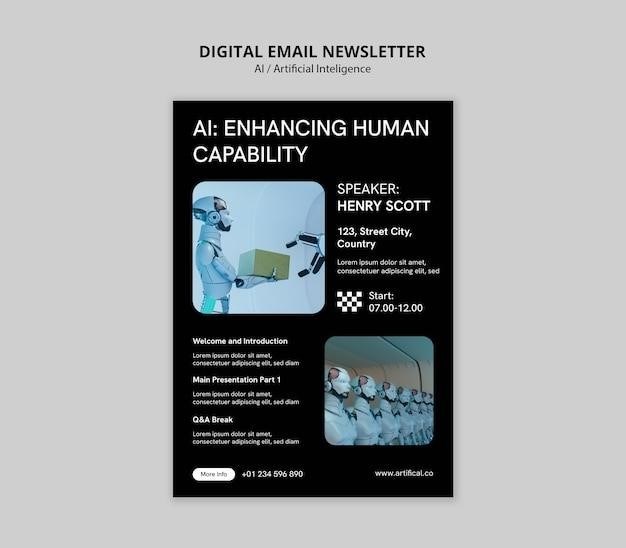The 14-Day Metabolism Reset is a holistic program designed to boost your metabolic rate‚ promoting fat loss and improved health through targeted nutrition‚ hydration‚ sleep‚ and exercise.
What is the 14-Day Metabolism Reset?
The 14-Day Metabolism Reset is a structured program designed to optimize metabolic function‚ helping your body burn fat more efficiently. It focuses on resetting hormone cell receptors by avoiding trigger foods for 3 days‚ followed by a balanced approach to nutrition‚ hydration‚ sleep‚ and movement. The plan emphasizes eating fat-burning foods‚ incorporating intermittent cheat days to boost metabolism‚ and staying hydrated with at least 100-120 ounces of water daily. It also highlights the importance of sleep and physical activity in maintaining a healthy metabolic rate; The program includes a detailed 14-day meal plan‚ sample recipes‚ and strategies for long-term weight maintenance‚ making it a sustainable and holistic approach to improving overall health and wellbeing.
Why Reset Your Metabolism?
Resetting your metabolism is crucial for improving fat loss‚ enhancing energy levels‚ and achieving long-term health. Over time‚ metabolic function can slow due to factors like poor diet‚ dehydration‚ and lack of sleep. A metabolism reset helps optimize your body’s ability to burn fat efficiently‚ improving overall health and reducing the risk of chronic diseases. By focusing on nutrition‚ hydration‚ and lifestyle changes‚ you can restore hormonal balance and reignite your metabolism. This approach not only aids in weight loss but also boosts vitality‚ helping you feel more energized and motivated to maintain a healthier lifestyle.
Benefits of a 14-Day Plan
A 14-day metabolism reset plan offers numerous benefits‚ including accelerated fat loss‚ improved energy levels‚ and enhanced overall health. This structured program helps reset hormonal balance and metabolic function‚ making it easier to shed unwanted pounds and maintain weight loss. The concise timeframe ensures commitment and visible results‚ motivating individuals to adopt healthier habits. By focusing on nutrient-rich foods‚ hydration‚ and lifestyle adjustments‚ participants can reboot their metabolism‚ reduce cravings‚ and achieve a faster metabolic rate. This plan is ideal for those seeking a sustainable approach to weight management and improved well-being without extreme restrictions or unrealistic expectations.
Understanding the Core Rules of the Reset
The 14-Day Metabolism Reset is guided by simple yet powerful rules: prioritize fat-burning foods‚ incorporate intermittent cheat days‚ stay hydrated‚ optimize sleep‚ and engage in regular movement to boost metabolic function effectively.

Rule 1: Eat Fat-Burning Foods Most of the Time
Focus on consuming nutrient-dense‚ fat-burning foods like lean proteins‚ healthy fats‚ and low-carb vegetables to support metabolic function. Avoid processed carbs and sugars‚ which slow metabolism. Incorporate foods that naturally boost your metabolic rate‚ such as lean meats‚ fish‚ eggs‚ avocados‚ and green vegetables. Staying hydrated and avoiding excessive alcohol is also crucial. By prioritizing whole‚ unprocessed foods‚ you create an environment where your body efficiently burns fat for energy rather than storing it. This foundational rule sets the stage for the reset‚ helping your metabolism function at its best while reducing cravings and energy fluctuations.
Rule 2: Boost Your Metabolism with Intermittent Cheat Days
Incorporating intermittent cheat days can strategically boost your metabolism by preventing plateaus and keeping your body responsive. These planned days allow for controlled indulgence‚ helping to reset metabolism and maintain motivation. By introducing calorie spikes‚ you avoid metabolic slowdowns‚ ensuring your body stays in fat-burning mode. Cheat days also provide psychological relief‚ making the program sustainable. However‚ they must be executed wisely‚ focusing on nutrient-dense treats rather than empty calories‚ to maximize benefits without derailing progress. This balanced approach keeps metabolism active‚ supporting long-term weight management and overall health goals effectively.
Rule 3: Hydration is Key
Hydration is a cornerstone of the 14-Day Metabolism Reset‚ as water is essential for optimal metabolic function. Drinking enough water supports digestion‚ nutrient absorption‚ and the removal of toxins‚ all of which are critical for fat burning and energy production. Aim to consume at least 100 to 120 ounces of water daily‚ adjusting for activity levels and climate. Proper hydration helps maintain a healthy metabolism‚ prevents plateau‚ and supports overall bodily functions. Incorporating water-rich foods and herbal teas can also contribute to your hydration goals‚ ensuring your body operates efficiently throughout the reset.
Rule 4: The Role of Sleep in Metabolism
Sleep is a critical component of metabolic health‚ influencing hormone regulation‚ appetite control‚ and fat burning. During sleep‚ your body repairs tissues and produces hormones like leptin and ghrelin‚ which manage hunger and metabolism. Lack of quality sleep disrupts these processes‚ leading to slower metabolism and weight gain. Aim for 7-9 hours of restful sleep each night to support your metabolic reset. Establish a consistent sleep schedule‚ create a relaxing bedtime routine‚ and avoid screens before bed to enhance sleep quality. Prioritizing sleep will help your body function at peak efficiency‚ making your reset more effective and sustainable.

Rule 5: Importance of Movement and Exercise
Regular movement and exercise are essential for boosting your metabolism and achieving sustainable weight loss. Physical activity increases your metabolic rate‚ helping your body burn calories more efficiently. Incorporate a mix of cardio‚ strength training‚ and high-intensity interval training (HIIT) to maximize results. Even daily activities like walking or light stretching contribute to overall metabolic health. Aim for at least 30 minutes of moderate exercise most days of the week. Consistent movement not only enhances fat burning but also improves energy levels and supports long-term metabolic function. Make exercise a priority to accelerate your reset and maintain a healthy‚ active lifestyle beyond the 14-day program.
Meal Planning and Recipes
The 14-Day Metabolism Reset provides a structured meal plan focusing on fat-burning foods‚ hydration‚ and balanced nutrition to support metabolic health and weight loss goals effectively.
Overview of the 14-Day Meal Plan
The 14-Day Metabolism Reset meal plan emphasizes whole‚ nutrient-dense foods to boost metabolism. It includes lean proteins‚ healthy fats‚ and fiber-rich vegetables‚ while minimizing processed carbohydrates. Each day is structured to balance macronutrients‚ promoting fat burning and energy. The plan cycles through phases‚ including intermittent fasting and cheat days‚ to keep metabolism active. Hydration is stressed‚ with recommendations for water intake. Sample meals might feature breakfast options like scrambled eggs with spinach‚ lunches of grilled chicken salads‚ and dinners of baked fish with steamed vegetables. Snacks are encouraged to maintain metabolism‚ such as nuts or low-sugar fruits. The program avoids restrictive eating‚ focusing instead on sustainable‚ enjoyable meals that support long-term health goals.
Sample Recipes from the PDF
The 14-Day Metabolism Reset PDF includes delicious and easy-to-make recipes designed to support fat burning and overall health. Breakfast options like a metabolism-boosting smoothie with spinach‚ avocado‚ and protein powder are featured. For lunch‚ recipes such as grilled chicken salad with mixed greens‚ cherry tomatoes‚ and olive oil dressing are provided. Dinner ideas include lemon garlic baked fish with roasted vegetables. Snacks like hard-boiled eggs or Greek yogurt with berries are also suggested. These recipes focus on whole‚ nutrient-dense ingredients‚ minimizing processed foods to maximize metabolic benefits. They are tailored to keep meals flavorful and satisfying while promoting weight loss and improved energy levels throughout the 14-day program.

Food Substitutions for Better Results

Food substitutions play a key role in optimizing the 14-Day Metabolism Reset. Swapping refined carbs for whole grains‚ such as brown rice or quinoa‚ helps maintain energy levels and supports fat burning. Replace sugary snacks with nutrient-dense options like berries or nuts to curb cravings without compromising metabolic progress. Healthy fats‚ such as avocado or olive oil‚ are encouraged to enhance satiety and hormone balance. Protein sources like lean meats‚ fish‚ or plant-based alternatives are essential for muscle retention and metabolism. These substitutions not only align with the program’s goals but also ensure meals remain satisfying and flavorful‚ making the reset sustainable and enjoyable for participants.
3-Day Detox Plan
The 3-Day Detox Plan is a crucial kickstart to the 14-Day Metabolism Reset‚ designed to eliminate toxins and reset metabolic processes. Day 1 focuses on cleansing with vegetable juices‚ herbal teas‚ and lean proteins like fish or tofu. Day 2 introduces light meals such as quinoa salads and steamed vegetables to replenish nutrients while maintaining detox benefits. Day 3 incorporates healthy fats like avocado and nuts to support hormone balance and energy levels. This structured approach helps reboot digestion‚ reduce bloating‚ and prepare the body for the full metabolic reset. By adhering to this plan‚ participants can enhance their overall results and set a strong foundation for sustainable weight loss and improved health.
Hydration Strategies
Proper hydration is essential for optimal metabolic function. Aim to drink at least 100-120 ounces of water daily‚ spread throughout the morning and afternoon. Start your day with a full glass of water to kickstart metabolism. Incorporate herbal teas or electrolyte-rich beverages to enhance hydration and support detoxification. Avoid sugary drinks that can hinder progress. Staying hydrated helps boost energy levels‚ supports digestion‚ and accelerates fat burning. For added benefits‚ infuse water with slices of lemon‚ lime‚ or cucumber for a refreshing and metabolism-boosting drink. Consistent hydration is a cornerstone of the 14-Day Metabolism Reset‚ ensuring your body functions efficiently and maximizes weight loss results.

Tracking Progress and Maintenance
Monitor your weight‚ measurements‚ and progress photos weekly. Track hydration levels and adjust habits as needed. Consistency is key to maintaining metabolic improvements post-reset.
How to Track Weight Loss
Tracking weight loss during the 14-Day Metabolism Reset involves monitoring your progress weekly. Use a scale to measure weight changes and a tape measure for body measurements. Take progress photos to visually track fat loss. Keep a journal to record your weight‚ measurements‚ and hydration levels. Adjust your habits based on results‚ ensuring consistency in hydration and movement. Regular tracking helps identify patterns and maintain motivation. Celebrate small milestones to stay encouraged. Post-reset‚ continue tracking to ensure long-term success. Consistency in habits and monitoring will support sustained weight loss and improved metabolism. Stay committed to your goals for lasting results.
Monitoring Hydration Levels
Monitoring hydration levels is crucial during the 14-Day Metabolism Reset. Aim to drink at least 100-120 ounces of water daily to support metabolic function. Track your intake using a water bottle or a hydration app. Signs of proper hydration include frequent urination‚ light yellow or clear urine‚ and consistent energy levels. Avoid sugary drinks and focus on water‚ herbal teas‚ and electrolyte-rich beverages. Incorporate water-dense foods like cucumbers and melons to enhance hydration. Regularly check your hydration by pinching the skin on your hand; quick snap-back indicates good hydration. Stay consistent to optimize metabolism and fat-burning efficiency throughout the reset. Proper hydration supports overall health and weight loss goals. Monitor and adjust your intake as needed for best results. Stay hydrated to maintain energy and support your metabolic reset journey. Consistency is key to achieving long-term success.

Maintaining Weight After the Reset
Maintaining weight after the 14-Day Metabolism Reset requires adopting sustainable habits. Focus on incorporating metabolism-friendly foods‚ staying hydrated‚ and continuing regular physical activity. Monitor your weight weekly and adjust your calorie intake or exercise routine as needed. Avoid yo-yo dieting and instead aim for gradual‚ consistent changes. Incorporate mindful eating practices‚ such as portion control and avoiding processed foods. Stick to the core principles of the reset‚ like intermittent cheat days and balanced nutrition. By maintaining a healthy lifestyle‚ you can preserve the metabolic boost achieved during the reset. Consistency is key to long-term weight management and overall well-being. Stay committed to your goals for lasting results. Patience and dedication will ensure sustained success. Keep track of your progress and celebrate small victories along the way.

Common Questions and Mistakes
Addressing FAQs and avoiding pitfalls is crucial for success. Common mistakes include over-restricting calories and neglecting hydration. Stick to the plan and listen to your body for optimal results.

Frequently Asked Questions
Many users wonder about hydration levels‚ exercise routines‚ and cheat days. Can I maintain weight after the reset? Yes‚ by following the core rules. How much water should I drink? Aim for 100-120 oz daily. What if I miss a cheat day? Adjust gently‚ but stay consistent. Are fat-burning foods expensive? No‚ focus on whole‚ nutrient-rich options. How long until results? Noticeable changes often begin within 7-10 days. Can I customize meals? Yes‚ use substitutions wisely. Is the plan sustainable? Absolutely‚ it’s designed for long-term health. Listen to your body and adapt as needed for the best outcomes.
Common Mistakes to Avoid
Avoiding common mistakes is crucial for success. Skipping hydration goals can slow metabolism‚ while overindulging on cheat days may hinder progress. Neglecting sleep or exercise undermines results. Strictly adhering to meal plans without flexibility can lead to frustration. Overeating even healthy foods is a pitfall. Ignoring food substitutions may stall weight loss. Not tracking progress can obscure improvements. Consistency is key‚ so avoid drastic deviations from the plan. By addressing these mistakes‚ you can maximize the benefits of the 14-Day Metabolism Reset and achieve sustainable results.

The 14-Day Metabolism Reset is a powerful catalyst for fat loss and improved metabolic health‚ empowering you to embrace a sustainable‚ long-term approach to wellness and vitality.
The Science Behind the Metabolism Reset
The 14-Day Metabolism Reset leverages scientific principles of fat-burning‚ hydration‚ and metabolic boosting. By focusing on nutrient-dense foods‚ intermittent cheat days‚ and optimized hydration‚ the program enhances metabolic function. Research shows that combining these strategies can accelerate fat loss and improve energy levels. The plan’s emphasis on sleep and exercise further supports metabolic efficiency‚ ensuring sustainable results. This holistic approach is backed by studies highlighting the importance of lifestyle factors in metabolic health‚ making it a proven method for achieving and maintaining a faster metabolism over time.
Final Thoughts on Sustainability
The 14-Day Metabolism Reset is designed to be sustainable‚ focusing on long-term health rather than quick fixes. By incorporating balanced nutrition‚ regular hydration‚ and consistent physical activity‚ participants can maintain their results. The program’s flexibility allows for cheat days and food substitutions‚ making it adaptable to various lifestyles. Emphasizing sleep quality and mindful eating further supports overall well-being. This approach ensures that the metabolic improvements are not just temporary but lead to a healthier‚ more sustainable way of living beyond the initial 14 days.
































